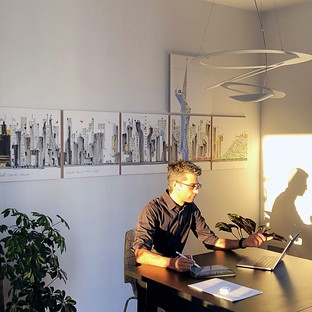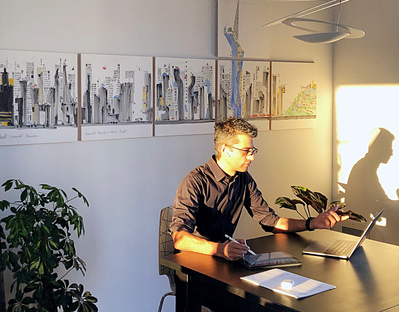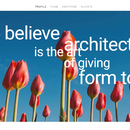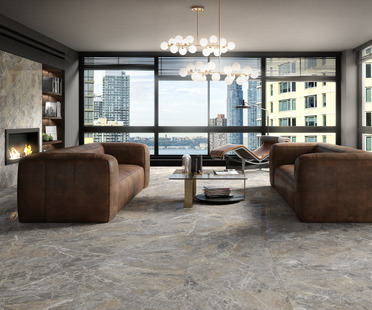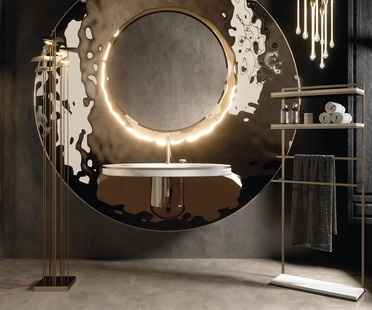19-05-2020
Architecture, the pandemic and the future of design: Dominik Philipp - Dietrich | Untertrifaller
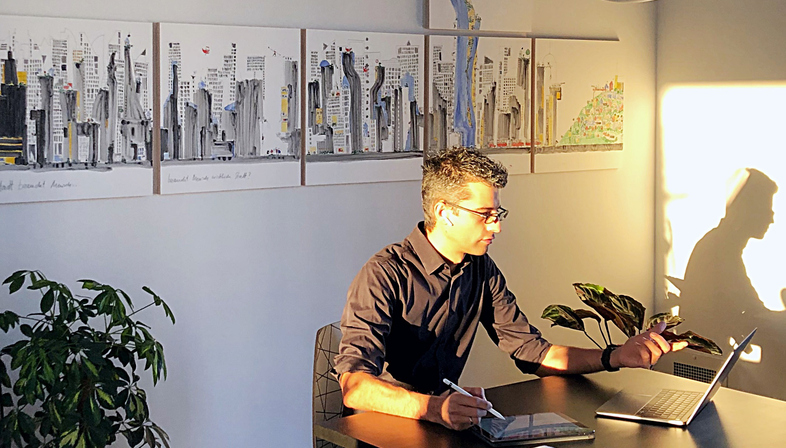
Dominik Philipp, Managing Partner of Dietrich | Untertrifaller
1. How did your firm handle the lockdown?
The speed of current events forced us to react within a few hours. Our teams have developed a very high level of initiative in this area, which has enabled the rapid change to mobile home-office work. This personal responsibility of each individual in our office was the driving force that significantly accelerated the dismantling and rebuilding of the infrastructure, the appropriate distribution of the workflows and the conversion of the familiar working environment.
The Corona crisis has triggered an incredible team spirit. In situations like this, it doesn't require a single leader, but the power of a team. The feeling of solidarity and team spirit in our office is stronger than ever, despite "social distancing".
However, all work cannot be done from home, so that in exceptional cases our office space can still be used. For example, to use a plotter, to build a model or to access samples and archived documents. We have formulated rules for this - such as the maximum number of people allowed in one room, which tables may be used (to maintain distance), how to get to the office, or on providing masks and gloves etc.
2. What new forms of work are you experimenting with and how about the results?
Even before the lockdown, we intensively tested new and fresh working methods. Here, we rely heavily on modern project management frameworks such as Kanban and SCRUM with daily stand up meetings. The daily virtual meeting of the team with a short report on the daily work (what did I do yesterday, what am I doing today, what is hindering me) helps us enormously in this time, in which one cannot overlook the work performance of our colleagues. We rely on digital KANBAN boards, sketches are created on digital whiteboards and shared among the team members. The same goes for meeting notes in OneNote.
Trust is part and parcel of the DNA in our project and processing culture. And linked to this trust is the independent allocation of work and the time at which to accomplish it. Work now happens much more freely even at times when you are not usually in the office (evenings or weekends). For this we had to find a mode of accessibility and new meeting culture. Meetings and votes now take place exclusively in digital meeting rooms - via MS Teams, Skype or similar tools. The installation on all end devices (laptop, tablet, smartphone, ...) led in a first and unproven step to our constant accessibility at all times of the day and night, even when we were attending another conference, doing sports or having dinner. Here we had to agree on a mode of direct accessibility.
The experiences of the first video conferences also led to a return to a more disciplined and respectful culture of conversation. Basic rules such as being on time, letting people finish, listening actively, repeating and reflecting on what the other person has said, etc. are now more strongly observed again.
Also the travel time between meetings is eliminated. We now have to actively block the time needed to process the meeting results and to prepare for the next topic. In the beginning we clocked the meetings too closely, the information could not be processed properly. Here we now plan a follow-up and preparation time between the individual meetings.
And we replace the gossip in the coffee kitchen with WhatsApp groups and individual team chats. The design and construction work has not changed significantly. The server structure has remained the same. There are still no locally stored intermediate states, but as before, the project is drawn and modeled in only one version. Transforming our ways of communication was the great moment of change. What we have not solved so far is the discussion on the analog working model. This exchange is still missing in the digital world.
3. How do you think this experience will affect the future management of an architectural practice?
We notice that as architects, like most creative minds, we are deeply social people. We need regular exchange and direct contact with others. Above all, we will not be able to replace discussion and joint work on the analogue model in the digital post-Corona future.
Due to the crisis, the step towards new working methods and digital transformation has now become an autonomous process. In any case, we will take the positive changes resulting from mobile working with us.
We also assume that the experience of videoconferencing will now consolidate itself in everyone's minds and we expect that we will no longer have to hold all meetings on site. This will considerably reduce our business trips.










